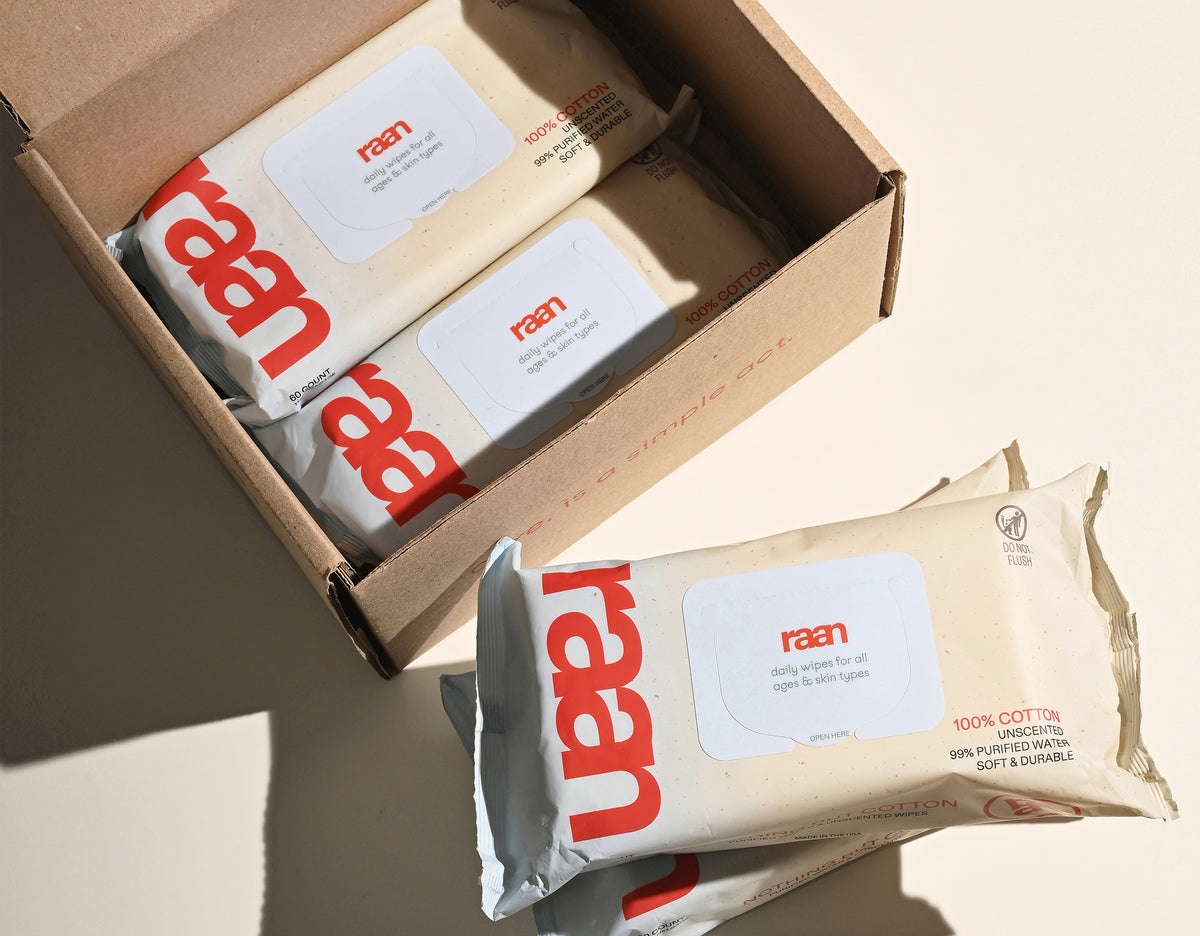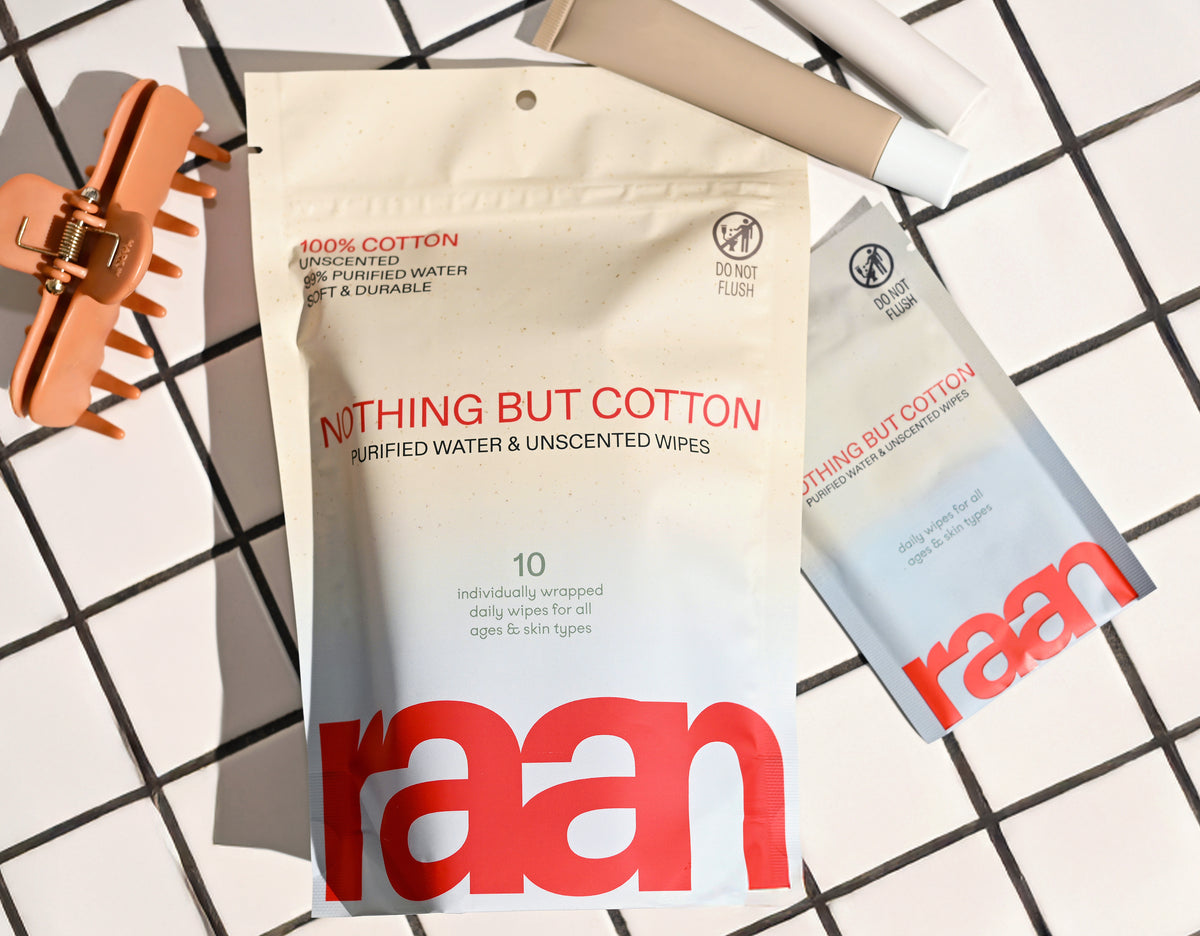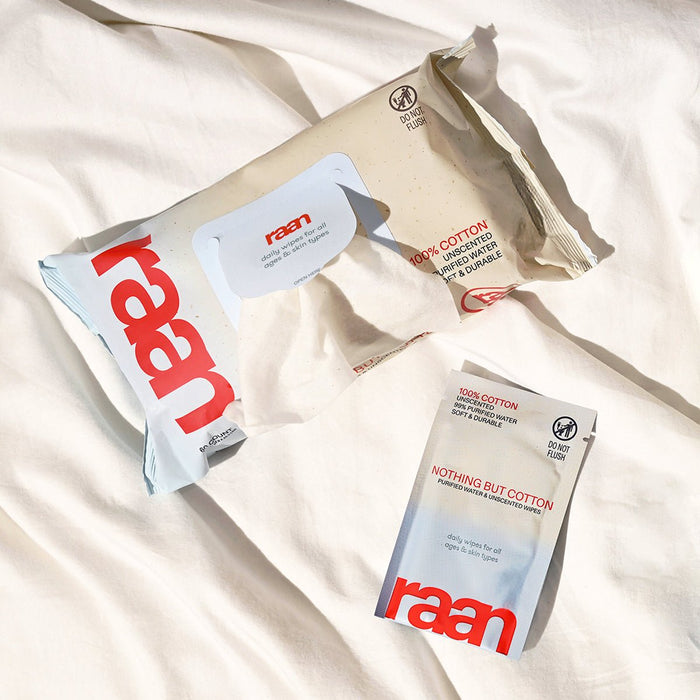Key Takeaways
- Wet Ones antibacterial hand wipes use benzalkonium chloride to eliminate 99.99% of common bacteria without containing alcohol.
- These wipes are convenient for on-the-go cleaning situations.
- They are made with synthetic materials and include preservatives.
- Wet Ones wipes function effectively but may not satisfy users seeking ingredient transparency.
- Ingredient-conscious consumers often prefer simpler, cotton-based wipes with fewer additives.
Table of Contents
Wet Ones Antibacterial Hand Wipes: What's Inside & Why
What Are Wet Ones Antibacterial Hand Wipes?
Wet ones antibacterial hand wipes are pre-moistened cleaning wipes designed for quick hand sanitization when soap and water aren't available. They're popular with families, travelers, and anyone needing portable germ protection at playgrounds, offices, or in cars.
For families seeking a gentler, ingredient-conscious option, the only unbleached, 100% cotton baby wipe for sensitive skin offers a simple alternative to conventional wipes. They're ideal for those who want effective cleaning without synthetic additives.
The core function is straightforward: open the pack, thoroughly wipe all hand surfaces for at least 15 seconds, then let air dry. The active ingredient, typically benzalkonium chloride, breaks down bacterial cell walls while moisturizing agents prevent excessive drying.
For on-the-go cleaning, unbleached, 100% cotton pocket wipes for sensitive skin provide a convenient, travel-friendly solution that fits easily in bags or pockets.
Key Ingredients & How They Function

Most wet ones antibacterial hand wipes contain benzalkonium chloride (around 0.13%) as the active germ-killing ingredient. Unlike alcohol-based sanitizers, this quaternary ammonium compound is gentler on skin and doesn't sting cuts or cause excessive dryness.
Supporting ingredients typically include water, moisturizing agents like vitamin E or aloe, and synthetic preservatives to maintain shelf stability. The wipe material itself is usually a blend of synthetic fibers designed for durability and moisture retention.
| Ingredient | Function | Skin Impact |
|---|---|---|
| Benzalkonium Chloride | Kills bacteria | Non-drying, gentle |
| Synthetic preservatives | Prevents contamination | May irritate sensitive skin |
| Moisturizers (Vitamin E/Aloe) | Prevents dryness | Generally well-tolerated |
When Ingredient Transparency Actually Matters
While wet ones antibacterial hand wipes serve their intended function, ingredient-conscious families often seek alternatives with full transparency. Conventional wipes typically contain synthetic fiber substrates, multiple preservatives, and fragrances that aren't always fully disclosed.
The difference lies in material choices and formulation philosophy. Some brands prioritize simplicity, using unbleached, 100% cotton with just five EWG-verified ingredients like purified water, food-grade preservatives, and organic aloe. This approach eliminates microplastics while maintaining effectiveness for sensitive skin.
For families managing eczema, newborn care, or simply preferring minimal ingredient lists, these transparent alternatives offer peace of mind without compromising functionality. The choice ultimately depends on your priorities: convenience and proven germ-kill rates versus ingredient simplicity and material transparency.
For a deeper dive into ingredient transparency and how it impacts your choice of wipes, you may find this best cotton wipes guide helpful.
Wet Ones vs. Other Hand Cleaning Options
Understanding when to reach for wet ones antibacterial hand wipes versus other cleaning methods helps you make smarter choices for different situations. Each option has distinct advantages based on germ-kill effectiveness, skin impact, and practical convenience.
Alcohol-based hand sanitizers deliver faster bacterial elimination but can irritate sensitive skin and aren't ideal for frequent use with children. Traditional soap and water remains the gold standard for heavy soil removal and comprehensive germ elimination, but requires access to clean facilities.
Non-antibacterial wipes focus on cleaning rather than sanitizing, they remove dirt and debris but don't make germ-kill claims. This makes them gentler for sensitive skin but less effective when bacterial protection is the priority.
| Method | Germ Kill Speed | Skin Gentleness | Portability | Best For |
|---|---|---|---|---|
| Wet Ones Antibacterial | 15 seconds | Moderate | High | On-the-go families |
| Alcohol Sanitizer | 10-15 seconds | Can dry/irritate | High | Quick adult use |
| Soap & Water | 20+ seconds | High (with moisturizer) | Low | Heavy cleaning |
| Cotton-Based Wipes | Cleaning only | Very high | High | Sensitive skin care |
For those who want a versatile, mess-ready solution, the mess-ready pack is a practical option for families who need wipes for a variety of situations beyond just antibacterial cleaning.
Safety Guidelines & Common Issues

Most wet ones antibacterial hand wipes are formulated for safe family use, but proper handling prevents skin irritation and maintains effectiveness. Always supervise children under 6, and avoid contact with eyes or mouth areas.
If wipes dry out, add a few drops of bottled water to the pack and reseal tightly. Store upright away from direct sunlight to prevent leakage. Any sticky residue typically air-dries within 30 seconds, if it persists, rinse hands with water.
For sensitive skin users, test on a small patch first. Discontinue use if redness or irritation develops, and choose fragrance-free versions when possible. Remember these are FDA-regulated as over-the-counter drug products, not toys, dispose in trash, never flush.
For more information about the regulation and safety of these products, refer to the official Wet Ones antibacterial hand wipes drug facts from DailyMed.
Why Material Transparency Changes Everything
While wet ones antibacterial hand wipes deliver reliable germ protection, families increasingly prioritize ingredient transparency and sustainable materials. The shift toward cleaner formulations reflects growing awareness of what we're putting on our skin daily.
Conventional wipes often contain synthetic fiber substrates that contribute to microplastic concerns, plus multiple preservatives and undisclosed fragrance components. Transparent alternatives use unbleached, 100% cotton with minimal, EWG-verified ingredients, eliminating guesswork while maintaining functionality.
This matters most for frequent users: parents changing diapers multiple times daily, skincare enthusiasts incorporating wipes into routines, or anyone managing sensitive skin conditions. The choice between conventional effectiveness and material simplicity ultimately depends on your family's priorities and skin sensitivities.
To compare the pros and cons of different wipe types, you might also enjoy this best wet wipes resource.
| Feature | Raan Cotton Wipes | Wet Ones Antibacterial | Standard Baby Wipes |
|---|---|---|---|
| Material | Unbleached 100% cotton | Synthetic fiber blend | Plastic-polyester blend |
| Ingredient Count | 5 EWG-verified ingredients | 10+ ingredients | 15-20 ingredients |
| Transparency | Full ingredient disclosure | Partial fragrance disclosure | Limited transparency |
| Microplastic Risk | Zero - natural cotton | Present in synthetic fibers | High - plastic substrate |
The material foundation makes the difference. While wet ones antibacterial hand wipes focus on bacterial elimination through synthetic chemistry, cotton-based alternatives prioritize skin barrier protection through material simplicity. This distinction matters most for daily-use scenarios where cumulative exposure adds up.
Families managing eczema, frequent diaper changes, or skincare routines benefit from the gentler approach of unbleached cotton. The trade-off is antibacterial claims, cotton wipes clean effectively but don't make germ-kill promises. Your choice depends on whether you prioritize bacterial protection or material purity.
If you're looking to try a variety of clean, cotton-based wipes, the starter set is a great way to experience different options and find what works best for your family's needs.
The Real Decision: Function vs. Transparency
Choose wet ones antibacterial hand wipes when bacterial protection takes priority: public restrooms, playground visits, or pre-meal cleaning without water access. Their proven 99.99% germ-kill rate and convenient packaging make them reliable for active families who need portable sanitizing power.
However, the growing demand for material transparency reflects valid concerns about daily exposure to synthetic substrates and undisclosed fragrance components. Parents using 6-8 wipes daily for diaper changes increasingly question whether antibacterial claims justify the ingredient complexity.
The future points toward hybrid approaches, keeping antibacterial wipes for specific sanitizing needs while switching to cotton-based options for routine cleaning. This strategy maximizes both protection and transparency without compromise.
Consider your family's specific needs: high-traffic public exposure favors antibacterial protection, while sensitive skin conditions and daily skincare routines benefit from material simplicity. The best choice often involves using both strategically rather than relying on one solution for every situation.
For additional scientific perspective on hand hygiene and sanitizer effectiveness, see the CDC's overview on the science behind hand sanitizers.
Frequently Asked Questions
What active ingredients are used in Wet Ones antibacterial hand wipes and how do they work?
Wet Ones antibacterial hand wipes use benzalkonium chloride as their active ingredient. This compound targets and breaks down bacterial cell walls, effectively eliminating 99.99% of common bacteria without the drying effects of alcohol.
How do Wet Ones wipes compare to natural or cotton-based wipes in terms of ingredient transparency and skin sensitivity?
Wet Ones wipes contain synthetic fibers and preservatives, which can make ingredient transparency less clear for those seeking simpler formulations. In contrast, natural cotton-based wipes use fewer, well-known ingredients, offering a gentler option for sensitive skin and greater peace of mind around what’s in contact with your skin.
Are Wet Ones antibacterial hand wipes safe for frequent use, especially for people with sensitive skin or conditions like eczema?
While Wet Ones wipes are formulated to be gentler than alcohol-based sanitizers, their synthetic ingredients and preservatives may not suit everyone, especially those with very sensitive skin or eczema. For frequent use, wipes with minimal, food-grade ingredients and natural fibers are often a better fit.
What are the best practices for storing and using Wet Ones wipes to maintain their effectiveness?
To keep Wet Ones wipes effective, store them sealed in a cool, dry place like a car glove compartment or diaper bag. Use each wipe to thoroughly clean all hand surfaces for at least 15 seconds, then allow hands to air dry for best results.






